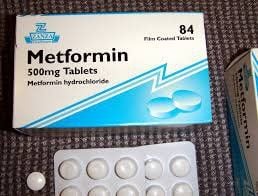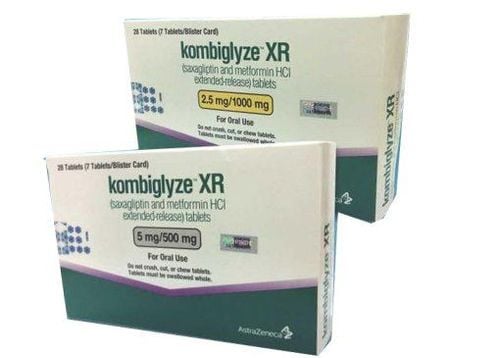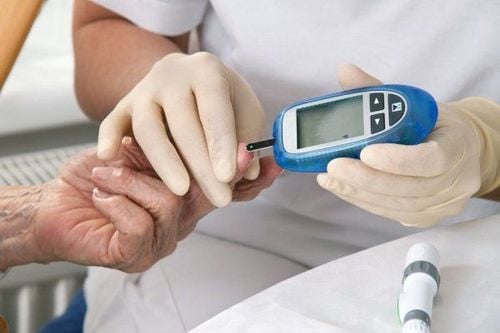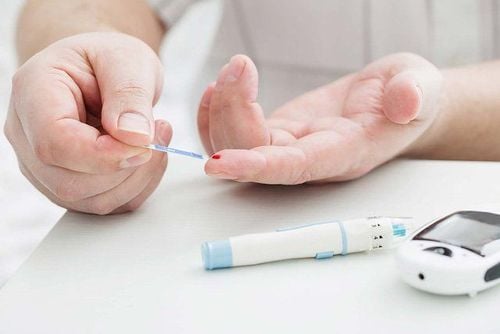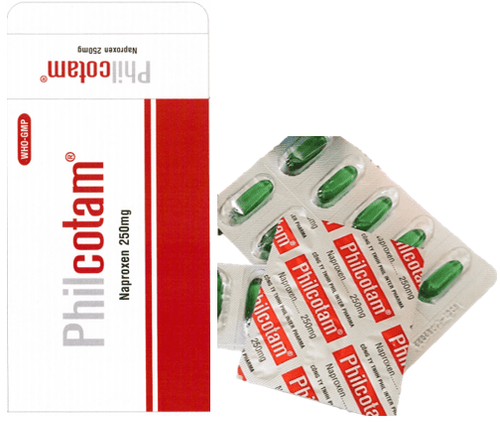This is an automatically translated article.
The article was professionally consulted by Specialist Doctor I Tran Quoc Vinh - Emergency Doctor - Department of Resuscitation - Emergency - Vinmec Nha Trang International General Hospital.If you have diabetes but feel pain that doesn't move, it could be due to a tendon problem. When blood sugar is high there is a role in the irritation affecting the tendons. In the case of uncontrolled diabetes, tendons can thicken and become more prone to tear.
1. Tendon Damage
Tendons are tough fibers or cord-like bands that connect muscle to bone. Tendons are distributed throughout the body including: shoulders, arms, wrists, hips, knees, and ankles. Tendons play a role in transferring force from muscles to bones, allowing the body to move.Tendon injuries occur near joints, such as shoulders, elbows, ankles, and knees. Tendon damage can seem to come on suddenly and weaken over time. When describing tendon injuries, doctors often use another term to describe it, tendinitis.
Most tendon injuries are the result of gradual wear and tear to the tendon from overuse or the natural aging process. Anyone can injure a tendon. But people who perform the same movements over and over again during work, sports, or everyday activities are more likely to affect the tendons.
Tendon damage often causes pain, swelling, and loss of strength in the affected area. The pain can get worse with overuse of the tendon. Additionally, you may have more pain and stiffness at night or when you wake up in the morning. The painful area may be red, hot, or swollen if there is inflammation.

2. Diabetes and Tendon Damage
2.1. Diabetes complications Tendon damage in type 1 and type 2 diabetes occurs as a result of substances that are advanced glycation end products (AGEs). They form when protein or fat is mixed with blood sugar. Normally the body makes AGEs. Normally, the body makes AGEs at a slow and steady rate. But when you have diabetes, the increase in blood sugar will increase the rate of AGEs production and affect the tendons.Tendons are made of a protein known as collagen. When AGEs form a bond with this collagen, it changes the structure of tendons and affects how well they function. For example, tendons may thicken more than usual and may not be able to hold the same body weight as they used to. As a result, the odds of tearing one of the tendons in the body increase.
A few tendon problems can occur if diabetes is not controlled such as:
Frozen shoulder: Stiffness and pain occurs when a capsule surrounding tendons and ligaments in the body's joints thickens. Rotator cuff fluid: This fluid damages the tendons and muscles surrounding the shoulder joint, including the shoulder muscles. Trigger Finger: The finger will be stuck in a bent and straightened position with a slight impact such as a flick of the finger and will sound like the trigger is pulled. Carpal tunnel syndrome: Numbness, tingling, and weakness in the wrist because flexor tendonitis increases the size of the tendon, increasing pressure on the nerves and blood vessels in the carpal tunnel, which can cause numbness at first. Numbness of fingers 1-2-3, then more severe numbness, weakness of all fingers. Dupuytren's contracture: This is a thickening of the tissue under the skin of the hand that causes the fingers to curve toward the palm. Tendon damage or diabetic tendinitis causes a lot of pain and can interfere with joint mobility. Even with surgery to repair this damage, the tendon can still be torn next time if it is stressed and overworked. Studies have shown that more than a third of people with diabetes have had surgery to correct the condition, but it is still possible to experience the problem again in the future.

Exercise is important to help manage diabetes, but people may find it more difficult to exercise when tendons are sore and stiff. Injury to the Achilles tendon at the back of the heel may further increase ankle mobility. This limited movement forces the body to put extra pressure on the midfoot with each step. This will increase the risk of foot ulcers.
When this happens, you should talk to your doctor about ways to keep your blood sugar levels in check. At the same time, find out how to recover from tendon related problems.
2.3. Treating and Preventing Tendon Damage
The best way to avoid tendon related problems is to keep your diabetes under control. It is the process of lowering blood sugar to an acceptable level with the help of diet, exercise and compliance with the use of drugs as prescribed by the doctor. In the event that your body weight is more than recommended, you may be encouraged to lose a few pounds (maintain BMI < 23 kg/m2) to ensure that your weight and sugar levels are maintained. in blood. When it does, it will help you improve better health and reduce pressure on the tendon at the same time.
When tendon damage occurs, you should consult a specialist for appropriate treatment. For example, the doctor will prescribe the use of drugs or therapeutic methods to improve the condition as well as gradually reduce the pain, such as:
Use pain relievers such as: meloxicam, ibuprofen, celecoxib.. Muscle relaxants. Physical therapy and exercise exercises Using heat and ice to treat pain The splint keeps joints in the body stable while the tendons heal and heal.

Diabetic tendon injuries cause a lot of pain and can interfere with joint mobility. Even with surgery to repair this damage, the tendon can still be torn next time if it is stressed and overworked.
Therefore, to prevent complications of diabetes, you should monitor and check your condition regularly to make appropriate adjustments in the treatment regimen. Currently, Vinmec International General Hospital offers a Diabetes Outpatient Management Package to help limit serious complications caused by diabetes.
Please dial HOTLINE for more information or register for an appointment HERE. Download MyVinmec app to make appointments faster and to manage your bookings easily.
Reference source: webmd.com




